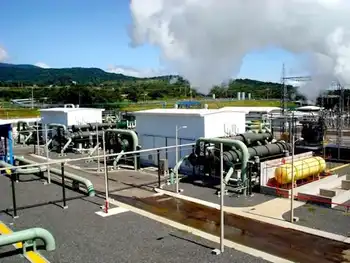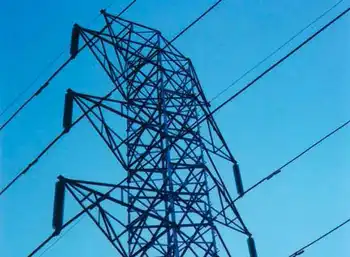Anger over electricity prices puts producers on edge
By EDMONTON JOURNAL
Substation Relay Protection Training
Our customized live online or in‑person group training can be delivered to your staff at your location.

- Live Online
- 12 hours Instructor-led
- Group Training Available
Power bills will be almost double in December what they were a year ago and January promises to be as bad, or even more costly, as the cold, dark winter months sink in on three major power plant outages.
And while residential consumers represent only 13.5 per cent of the provincial electricity load, they are meaningful, noted the newly appointed head of Alberta's consumer advocacy agency. "The politicians are concerned because the voters are concerned," Robert Spragins said at a recent conference in Calgary.
"And when voters are unhappy with the way prices are, then they take notice of that."
Prices in Canada's only fully deregulated electricity market have climbed steadily this year because of generation station outages and steady demand. Consumers became resigned to prices that ranged from $32 per megawatt-hour in May to $126 per MWh in August an average of about $77 for the year.
But when news broke that major utility TransAlta ad-mitted to manipulating power prices last November - while working within existing rules - consumers started asking questions about how the market works.
"This, to put it mildly, has not gone well," said Evan Bahry, executive director of the Industrial Power Producers of Alberta. He is an avid defender of Alberta's open power market, but admits to feeling anxious in the current environment. Alberta opened its wholesale electricity market to competition 15 years ago and its retail markets for residential users a decade ago.
Although industry has embraced the concept, the general public has been reluctant to sign on to any long-term retail contract, preferring to stay with the government's regulated rate.
"The challenge we have is this whole idea of restructuring had very little public resonance in the first place," Bahry said. "Every time you layer another challenge to it, you're drawing from a very shallow well of public capital. Maybe that's what sets us up for a distinct political challenge - there was very little buy-in in the first place."
Currently, there are approximately 170 market participants on the wholesale side as a result of deregulation. Retail, opened with promises of increased choices for residential consumers, has not fared as well.
Only three new major players - Direct Energy, Just Energy and Milner Power - stayed in the province with Calgary-owned utility Enmax after others realized Alberta's population was too small to support a variety of retailers. As well, about a dozen boutique retailers offer a floating rate plus one to 1.5 cents.
Almost three-quarters of Albertans have stuck with the regulated rate option, instituted in 2001 at eight cents per kilowatt-hour to pacify consumers reeling from sky rocketing electricity rates and to avoid Ontario's reaction to consumer backlash: closing down retail markets.
The province now runs the risk of high prices and public outcry propelling newly minted Premier Alison Redford toward dismantling both wholesale and retail markets, warned industry insiders.
"I believe there is a threat of a consumer backlash, there is a serious political risk of high electricity prices," said Sheldon Fulton.
A veteran of both Alberta and Ontario's competitive markets, Fulton heads the Industrial Power Consumers Association of Alberta and is emphatically not in favour of going back to a regulated system.
What Fulton wants to see is Alberta's market operate on a physical contract basis, moving volumes of power, rather than a financial contract focused on price.
This year generators have made 50 per cent of their profits in just five per cent of the year because of spiking prices, he noted. That means from January to mid-November, half of their revenues were accrued during just 315 hours, the equivalent of 12 days.
While not opposed to investors making money, Sheldon questioned the impact on residential users. Last year, after gradual increases, the regulated rate was based on 100 per cent of market prices averaged over a month, leaving consumers vulnerable to price spikes - and retailers puzzled at why they can't seem to get customers to switch to contracts.
"I think we need to do a better job of educating the consumer," said Charles Ruigrok, interim Enmax CEO.
"Fully 70 per cent of Albertans are on the regulated rate. They don't have to be, they can pick a lower fixed rate." Enmax buys the largest volume of regulated power in the province and while supporting the market, would welcome a revisit of rules, he said. Regulated rate option carriers are limited to buying 45 days in advance, negating the possibility of hedging on longer term averages.
Volatility was one of the reasons the city-owned utility is building generation, to control supply costs and not have to buy out of a roiling market, he said.
Downed power plants, price spikes and admissions of price manipulation have prompted consumers and politicians to look more closely at Alberta's competitive electricity market. Here are a list of players and a couple of links to help clarify how the market works.
Alberta Electric System Operator - This agency plans, operates and maintains Alberta's intricate transmission grid, ensuring the changing ebb and flow of electrons remains balanced and the system is stable. It also facilitates the electricity market through the power pool.
Market Surveillance Administrator - This watchdog agency exists under the Alberta Utilities Commission Act with a mandate to oversee, investigate and enforce rules in the provincial electricity and retail natural gas markets.
The Alberta Utilities Commission - The quasi-judicial agency regulates the natural gas and electricity markets to protect the interest of Albertans "where competitive forces do not." It is the judge to the system operator and market administrator's police and sheriff. The commission also approves distribution rates, and regulated rate options for power and gas utilities.











